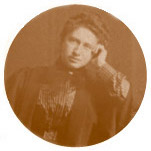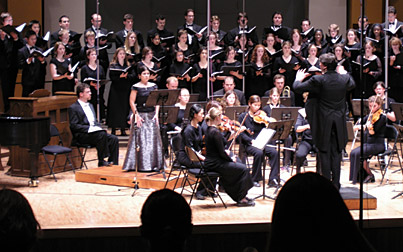The Century Club (Page 2)
100 Years of Music

Nicolas Morin
"It's a fascinating cultural history." So Don McLean, Dean of the Faculty of Music, describes the last one hundred years of music at McGill. And the facts bear out his observation. The McGill Conservatorium, established as a teaching school in 1904, created a formal home for the women-only courses in music the University had offered since 1884.
"The Victorian and Edwardian rationale for music instruction was to train ladies in the appropriate parlour skills," says McLean. To that end, Charles Harriss, who was to become the Conservatorium's first director, had brought the Hungarian-born pianist Clara Lichtenstein to Montreal to reorganize the teaching of music at the new Royal Victoria College when it opened in 1899. His choice was auspicious. "Lichtenstein was a very good pianist; she drew men and women to the Conservatorium and was a performing force in the community," says McLean. Lichtenstein was appointed Vice-Director in 1904; the Conservatorium dropped the gender restrictions on music classes, established a Chair in Music in 1907, created its first symphonic ensemble in 1908, and awarded its first Doctorate in Music in 1911. In 1920, music was a significant enough activity that McGill founded the Faculty of Music.
"So we've gone from ladies in the parlour to boys in the basement," says McLean, noting that the technology driving much of current research and performance in music originated in the traditionally male-dominated world of the computer programmer (although, as with the Conservatorium 100 years ago, the gender biases have quickly dissolved). The major new innovation in the scientific and technological aspects of music is best represented by the Centre for Interdisciplinary Research in Music Media and Technology, or CIRMMT (pronounced kermit), which will be housed in the new McGill Music Building scheduled for completion early in 2005.
"With CIRMMT, we're probably building the world capital of reception and cognition research," says McLean. Its interdisciplinary researchers, drawn from across the University and around the globe in fields such as psychology, neuroscience and electrical engineering, will be concerned not only with scientific and technological applications for music, but also questions of how the mind processes and creates music.
"CIRMMT enables these researchers to interact in the context of a music faculty, which has an emphasis on profound end products and the possibility of doing things that are emotionally and artistically significant," enthuses McLean. "The synergy is instant and enormous."
The new McGill Music Building at the corner of Sherbrooke and University streets provides a state-of-the- art research and performance environment. The CIRMMT media hall, a four-storey multimedia room in the new building, will be "the quietist and most effective symphonic score stage in the world," says McLean. "You could put a full symphony orchestra and chorus in there to do acoustic research at a level unprecedented anywhere." Other CIRMMT facilities will include multimedia studios, research labs, and production studios. The new building will also house the Marvin Duchow Library and a 200-seat recital hall, in addition to staff and administrative offices.

McGill music pioneer Clara Lichtenstein.
McGill Archives
Of course, McGill also continues to train toplevel musicians, and that requires performances. The Faculty presents more than 600 musical events every year, and have designated some of these concerts and other activities as centennial celebrations, such as the performance of Harry Somers's opera Louis Riel, a classic work written for the 1967 Canadian centennial. Mahler's Symphony No. 2 (Resurrection) and Verdi's Requiem, performed by the McGill Symphony Orchestra and Choir, open and close the season. "It's a great opportunity for the Faculty as well as McGill to fly the flag," says McLean. "We're still renowned in North America and Europe for performances we did in 1995 in Carnegie Hall, and we need to keep doing that kind of work."
While new developments underscore the cultural and intellectual evolution of music in the University and society, the Faculty remains committed to maintaining the various roles it has assumed over its history. "We don't drop off the old when we pick up new responsibilities," says McLean. "We're probably more involved in community education today than we were in 1904, and we're certainly doing more performances and reaching more sectors of society."
The McGill Conservatorium program remains, through multiple transformations, an extension of the Faculty, and over the last four decades McGill has established a tradition of playing at the avant-garde of music technologies. "You have to raise the next generation of musicians so that they're as comfortable in their research environment, certainly in the recording studio, as they are on stage," says McLean. "And the next generation of scientists has to be as sensitive to artistic output as to scientific results." With CIRMMT and the McGill Music Building, the Faculty is poised to take on an even stronger leadership role in its second century.
For more information about music at McGill, see www.mcgill.ca/music and www.mcgill.ca/conservatory.

A choral performance in Pollack Hall.
Paul Vandenberg


